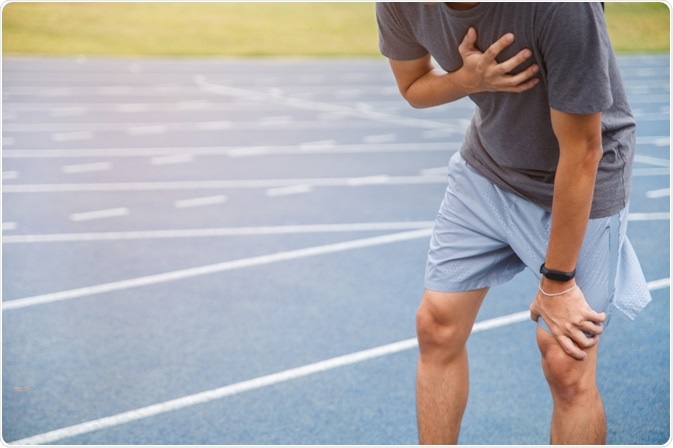It is common for athletes to have some breathing difficulties during or after the physical exertion of sports or other athletic events. There are several causes of these symptoms; however, poorly managed asthma is the leading reason for this to occur, with up to a quarter of all athletes exhibiting signs of asthma.
Exercise-induced asthma is characterized by inflammation and the onset of asthma symptoms associated with high-intensity exercise. It is important that this is diagnosed when signs present to prevent severe complications. When managed adequately, asthma should not inhibit the ability or participation of the athlete in sports.
Exercise induced asthma
Exercise-induced asthma
Exercise-induced asthma presents shortly after the initiation of intensive physical exercise and involves inflammation and narrowing of the airways. This leads to the presentation of asthma symptoms such as difficulty breathing and wheezing.
This type of asthma affects almost all people who suffer from asthma, but can also present in individuals who do not otherwise note symptoms of the condition.
The cause of exercise-induced asthma can vary. It may be associated with the loss of heat or water from the body or the inhalation of cold, dry air through the mouth and into the lungs.
Diagnosis
It is important that athletes and sports trainers are able to recognize the signs and symptoms of asthma to initiate improved management techniques and overall outcomes.

Image Credit: Zania Studio / Shutterstock.com
Diagnosis of exercise-induced asthma is usually made upon a description of the symptoms following an attack related to physical activity. Individuals usually report symptoms including shortness of breath, chest tightness, coughing, wheezing, or decreased performances that commence shortly after the initiation of intense exercise.
Exercise-induced asthma also causes a reduction in the function of the lungs as a result of constriction of the bronchi induced by physical exercise. Spirometry testing shows that individuals with exercise-induced asthma experience a reduction in the volume of air that can be exhaled from the lungs in one second, which is referred to as the forced expiratory volume in 1 second (FEV1).
Treatment
Well-controlled asthma usually involves methods to reduce inflammation in the airways and the resulting symptoms, both of which allow the individual to participate in physical and sporting activities without inhibition.
The specific management plan will depend on the unique needs of the individual. For example, an elite athlete requires a treatment that will effectively control symptoms and prevent progression, without impacting their immediate sporting performance.
Most athletes will require both a controller and a reliever medication to manage their asthma. The controller medication is used to reduce inflammation in the airways over the long term, as well as reduce the risk of flare-ups. Alternatively, reliever medication is used when symptoms are present to provide short-term relief of symptoms by reducing the constriction of the airways and allowing them to breathe.
Prevention
It is important that athletes are constantly monitored for early signs of asthma worsening to allow them to react promptly and maintain control of the condition. Some athletes may only require reliever medications for intermittent symptoms and a “step-up” approach can be used to help prevent symptoms for athletes that notice the frequency of their symptoms is increasing.
Other preventative techniques include:
- Warming up before exercise
- Take precautions in cold weather (e.g., cover mouth and nose)
- Use a bronchodilator inhaler medication shortly before exercise
When these techniques are implemented, in combination with preventative pharmacological techniques to reduce inflammation in the airways, most athletes can continue to participate in exercise activities.
References
Further Reading